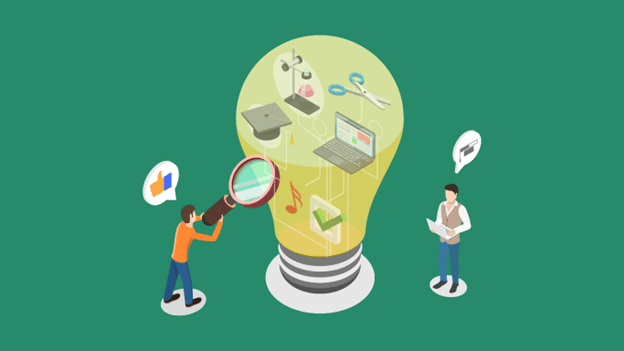Here at Litmus, there is a common theme in the feedback we receive from our customers. How can I make sense of my raw industrial data, with all its inconsistencies and variabilities, even among identical machines on the same production line?
Fortunately, after years of dedicated research and development, we’ve assembled a comprehensive Industrial DataOps suite that directly tackles these challenges. By transforming chaotic, raw data into clear, structured, and actionable information, Litmus Edge enables our customers to enhance their decision-making processes and significantly improve operational efficiency.
But how exactly do we achieve this transformation? We are often asked for specifics and that’s why we’ve put together this article, outlining the five critical steps we follow at Litmus to turn your complex industrial data into information that sets you up for success.
1. Data Collection and Normalization
At Litmus, our data collection and normalization process is the foundational step in transforming raw industrial data into a usable form. We begin by gathering data from a wide array of industrial devices, such as Programmable Logic Controllers (PLCs), sensors, and other machinery interfaces.
As you’re no doubt aware, these devices often produce data in various, often incompatible formats that challenge uniform data analysis and integration.
Here’s how we effectively manage and standardize this data:
Format Standardization:
We implement protocols to standardize these different data formats. This ensures that data from various sources and devices can be aggregated and compared consistently.
Data Calibration:
Variations in device calibration can lead to discrepancies emerging in data outputs. That’s why our normalization process includes data recalibration so that readings like temperature, pressure, and speed are consistent across all devices, regardless of their make or model.
Timestamp Alignment:
We synchronize data by aligning timestamps accurately. This is crucial for real-time data processing and systems where low latency is essential for immediate decision-making.
Error Identification and Correction:
As the data is collected, Litmus Edge automatically scans for anomalies and errors. This includes outliers or gaps, and it uses pre-defined rules to correct these issues or flag them for manual review. This ensures the integrity and reliability of the data before it progresses to further processing stages.
Data Aggregation:
Data from multiple sources and devices is aggregated into a single stream. This aggregation is tailored to the operational needs of the facility, allowing for customized views of data, and revealing deeper insights into operational processes.
2. Metadata Enrichment
Once the raw data has been collected and normalized by Litmus Edge, the next step is metadata enrichment.
This stage involves augmenting each data point with relevant contextual details, transforming basic data into multidimensional and actionable information.
This enriched data enables more detailed analysis and improved operational tracking. Here’s how we do it:
Identification of Source and Type
For each data point, Litmus Edge identifies and records the source device and the machine type. Doing this helps trace data back to its origin, which is important for troubleshooting and performance analysis.
Attachment of Operational Context
It also attaches operational context to each data point, e.g. the production batch, shift details, and specific production line. This contextualization is needed to correlate data with specific operational periods or conditions, allowing for more targeted analysis and optimization.
Dynamic Tagging System
Using a dynamic tagging system, you can flexibly add or modify tags based on the evolving needs of the operation. This system is designed to adapt to changes such as new production lines or shifts without requiring a system overhaul.
Data Structuring for Analysis
After attaching all relevant metadata, the data is structured in a way that makes it ready for immediate analysis. This structuring includes organizing data into databases or other forms of data storage that support quick retrieval and easy access for analysis tools.
Quality and Consistency Checks
Since metadata is added all the time, we carry out continuous quality and consistency checks to ensure that it accurately reflects the data it describes. This step is crucial for maintaining data reliability as it moves through subsequent processing stages.
3. Integration with ERP and MES Systems
Integrating Litmus Edge with ERP, MES and the rest of the stack ensures that the enriched data from the plant floor is effectively synchronized with the core operational systems that govern enterprise-wide activities.
Let’s take a closer look at how that works in practice:
Seamless Data Synchronization
Seamless data synchronization through the stack allows for real-time updates and adjustments based on changes noted in ERP and MES, like shift rotations or new batch productions.
Data Exchange Protocols
Litmus Edge uses stringent data exchange protocols to enable the secure and efficient transfer of data between systems. These protocols are designed to handle large volumes of data without compromising its integrity or security.
Automated Contextual Updates
Whenever changes occur in the production environment, such as a new production batch or a shift change, Litmus Edge automatically updates the data context to reflect these changes. This automation ensures that data remains relevant and accurate, providing a real-time snapshot of operational status.
Enhanced Data Utilization
By integrating enriched data with ERP and MES systems, Litmus Edge enhances the potency of this information, making it accessible for broader business applications. This includes planning, quality control, and compliance tracking, to name just a few, which are integral to operational excellence.
Feedback Loop for Continuous Improvement
The integration also establishes a feedback loop between the production floor and enterprise systems. This feedback allows for continuous refinement of operations based on data-driven insights, driving efficiency and productivity improvements.
4. Digital Twins for Advanced Contextualization
Digital twins play an essential role in further contextualizing the data in Litmus Edge. These are virtual models which represent physical assets and are embedded with real-time data to closely mirror actual operating conditions.
There are four aspects worth drawing attention to:
Virtual Representation
Litmus Edge creates precise virtual replicas of physical systems, which are updated in real-time with data from Litmus Edge. These models help in visualizing complex processes and simulating potential changes without impacting the actual operations.
Interactive Analysis
Digital twins allow stakeholders to interact with the models, providing a dynamic tool for exploring different scenarios and predicting outcomes based on the enriched data.
Predictive Maintenance and Optimization
By analyzing the operational data embedded in digital twins, Litmus Edge accurately predicts wear and tear on physical assets and schedule maintenance more effectively. This predictive capability helps cut downtime and extend the lifespan of equipment.
Enhanced Decision Making
The detailed insights provided by digital twins support more informed decision-making, giving managers a way to optimize operations based on accurate, real-time information.
5. Continuous Data Enhancement and Decision Support
However, the process is not yet complete. The final step is continuous data enhancement and decision support. This ensures that the data supports current operational needs and adapts to future demands.
Here’s what we take into account:
Ongoing Data Analysis
Litmus Edge constantly analyzes the incoming data for new patterns or anomalies, using advanced analytics and machine learning techniques. This ongoing analysis helps you adapt to changes and improve processes continuously.
Dynamic Data Updates
As new data is collected and conditions change, Litmus Edge dynamically updates the data sets to ensure they always reflect the most current operational status.
Integration with External Data Sources
We integrate external data sources such as market trends, environmental conditions, and supply chain data to provide a holistic view of the factors affecting operations.
By following these steps, Litmus Edge not only processes data but also enhances it: transforming messy and underutilized industrial data into a structured, actionable resource.
That means adding layers of meaning and utility, helping you make well-informed decisions and significantly improving your operational efficiency and responsiveness to market dynamics in the process.
If you’d like to learn more about this and other aspects of Litmus’s approach to Industrial DataOps, put the kettle on, kick back, and tune into this classic interview with our CEO Vatsal Shah on the Manufacturing Hub Podcast.



